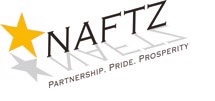
About the Author
Daniel Griswold,
President, NAFTZ, National Association of Foreign-Trade Zones
Any British-owned company looking to invest in the United States should investigate the US Foreign-Trade Zones programme as a potential tool to reduce operating costs and enhance supply-chain efficiency.
Enacted by Congress in 1934, the FTZ programme today is attracting a record number of applicant companies through its new streamlined regulations, while generating unprecedented activity in terms of merchandise received and exports. Today the programme is home to more than 3000 companies, both American and foreign-owned, including such well-known firms as General Electric, Apple Inc., Rolls-Royce, Airbus, Mercedes-Benz and BMW.
New data from the U.S. Foreign-Trade Zones Board documents that the programme is hitting the sweet spot for US-based companies competing in global markets. In 2013, a record $835 billion in merchandise was received by companies operating in foreign-trade zones, almost two-thirds of it domestically sourced. The top categories of foreign-sourced merchandise were oil/petroleum, vehicles and vehicle parts, consumer and other electronics, textiles and footwear, machinery/equipment and pharmaceuticals.
Exported merchandise from FTZs reached a record $79.5 billion in 2013. FTZ exports in recent years have grown far faster than overall US exports, affirming the competitive benefits of locating in a foreign-trade zone. Employment in US zones reached a record 390,000 workers in 2013.
Nearly 300 zones have been authorised across the United States and Puerto Rico, including at least one in every state and at every major port of entry, including seaports, airports and land-border crossings. Each zone is a defined area within the geographic United States that is considered outside U.S. Customs territory for purposes of import inspection and duty collection.
For companies operating within an FTZ, this means that customs officers step in to collect duties only when imported goods leave the zone to enter US commerce, not when goods are admitted to the zone from abroad. Goods can be stored in a zone indefinitely and are exempt from state and local ad valorem inventory taxes.
Duties can also be deferred on imported production equipment that is used to produce final products authorised for zone production. Duties on the equipment are not collected until the machinery is installed, tested and actually producing the specified goods. This can produce major savings for manufacturing companies that use sophisticated foreign-made equipment as part of their highly automated production process.
For final products that enter the $17.3 trillion US market from an FTZ, duties can be reduced or eliminated by offsetting “inverted tariffs”. If US tariffs on imported raw materials or components are higher than the tariff on the final product, the zone user can elect to pay the lower, final product duty on the value of the imported goods when they enter US commerce as part of the final product. Among the industries that benefit most from inverted tariff relief is the pharmaceutical sector, where duties on final products for the market are typically zero while significant duties remain on the 80 per cent of active pharmaceutical ingredients that are sourced abroad. Relief from inverted tariffs can be especially important to foreign-owned affiliates, which are more likely to retain supplier relationships in the home country.
Duties are eliminated entirely on goods that are re-exported, or on imported inputs that are then re-exported as part of final product. Foreign-owned affiliates can utilise the zone environment in the United States as a “land bridge” to export to North and South America and on to Asia or back to Europe. Duties are also eliminated on imported goods that are then scrapped or destroyed in the production process.
Operating in an FTZ can accelerate supply-chain velocity by allowing user companies to utilise “direct delivery” of goods from dockside to the zone. Once approved by the local port director, direct delivery allows the user to ship known and repetitive goods directly to the zone on weekends and after hours, with admission notification filed with Customs the next working day. This can cut 1 to 2 days off delivery times into a zone, a huge benefit for companies importing perishables and other time-sensitive goods. The large majority of FTZ user companies qualify for direct delivery.
On the entry side, FTZ user companies can realise significant savings on the payment of the Merchandise Processing Fee through the “weekly entry” process. Outside the FTZ environment, companies are liable to pay the MPF on every entry, up to a maximum of $485 per entry. Through weekly entry, which is only available to FTZ-user companies, those payments can be reduced to one per week, resulting in significant savings for the user and a reduction in transactions for Customs. Weekly entry has encouraged major retailers to establish state-of-the art FTZ distribution centres in the United States.
Another real benefi t of the FTZ programme is enhanced security. By design, FTZs are secure areas with controlled access, background screening of key employees and enhanced inventory and record keeping controls. U.S. Customs considers participation in the FTZ programme to be a “best practice” for its Customs-Trade Partnership Against Terrorism.
The FTZ programme is more user friendly than ever. Companies new to the FTZ environment can tap into a
growing support network of providers offering FTZ inventory management software and third-party logistics, as well as experienced grantees who manage administration of the zones at the local level. New regulations that went into effect in 2012 have streamlined the approval of warehouse/distribution applications to 30 days or less, and of manufacturing/production applications to 120 days or less in more than 80 per cent of cases. (For the minority of production applications that involve more politically sensitive imported components, the process can take significantly longer and can result in more restricted authorisation.) The Alternative Site Framework introduced by the FTZ Board in 2009 means that zone status can come to any operation located within a multi-county service area, rather than operations needing to locate in a centralised industrial park or warehouse district.
The programme has proven its effectiveness by attracting new investment in the US manufacturing sector from abroad and the reshoring of US investment. British-owned Rolls Royce Energy Systems has applied for zone status for a facility in Mount Vernon, Ohio, that produces industrial gas turbines, power generation turbines and generator sets. Imported components include AC generators, industrial gas turbines, turbine bases and gearboxes. Other British-connected companies using the FTZ programme include AstraZeneca Pharmaceuticals, Perkins Engines, Unipart Logistics, the London Metal Exchange, BAE Systems and BP.
General Electric Appliances and Whirlpool have each recently opened major manufacturing enterprises in foreign-trade zones in the United States. GE has invested $800 million in a huge appliance manufacturing facility with FTZ status near Louisville, Kentucky, where GE opened a brand-new, cutting edge assembly line in 2012 for low-energy water heaters. In Clyde, Ohio, Whirlpool has opened a 2.4 million square foot facility that it calls the largest washing-machine plant in the world. FTZ status allows the company to reduce or eliminate duties on such imported components as circuit boards, pumps and motors, which would otherwise face duties as high as 9 per cent. With the added attraction of FTZ status, Whirlpool is shifting production of washing machines back to the United States from Monterrey, Mexico.
Foreign-trade zones have proven equally appealing to high-tech companies. In Silicon Valley, California, Tesla Motors is now producing its state-of-the-art electric sports cars in a foreign-trade zone plant in Fremont. Tesla imports battery cells, battery pack components, and electric motor components, which it combines in the plant with US supplies to make completed battery packs and transmission assemblies. Just down the road, Lam Research, an equipment supplier and service provider to the semiconductor industry, utilises its foreign-trade zone status to reduce tariffs on components that it uses to manufacture production equipment, more than 95 per cent of which it then exports. According to a report in the Silicon Valley Business Journal, the company estimates it saves $1.4 million a year from operating in a foreign-trade zone.
British companies investing in the United States can enjoy the same benefits available to those and thousands of other companies now operating within a US foreign-trade zone.
Further Information
For more information, please contact the National Association of Foreign-Trade Zones, the FTZ Board and SelectUSA in Washington, DC. The local FTZ grantee should be able to provide information on how to apply for foreign-trade zone status at any location in the United States.
Daniel Griswold is president of the National Association of Foreign-Trade Zones, which represents 650 grantees, operator/user companies and service providers throughout the United States.
Tel: +1 202-331-1950
Email: dgriswold@naftz.org
Website: www.naftz.org
